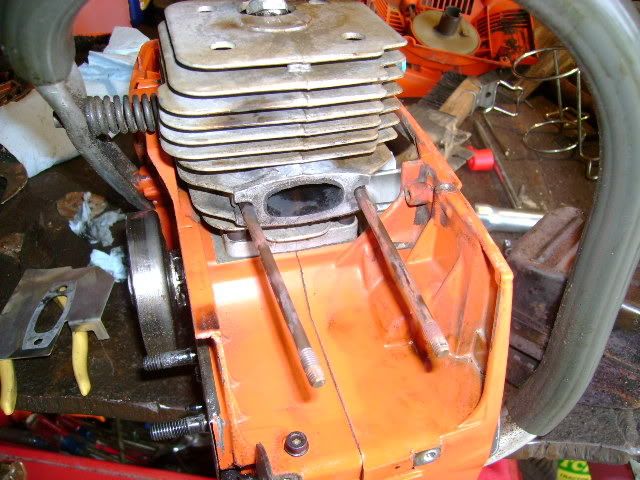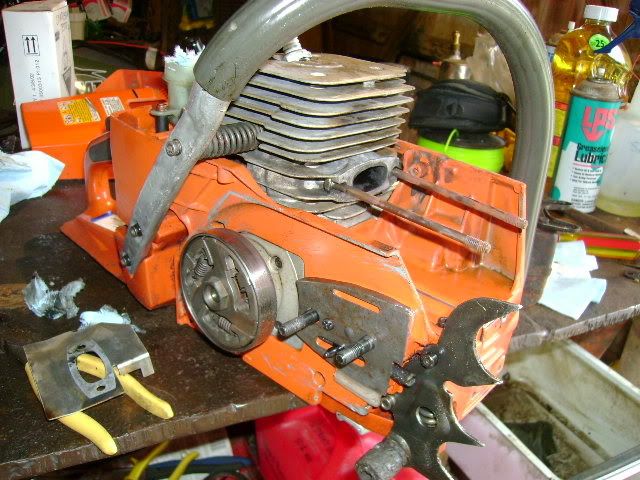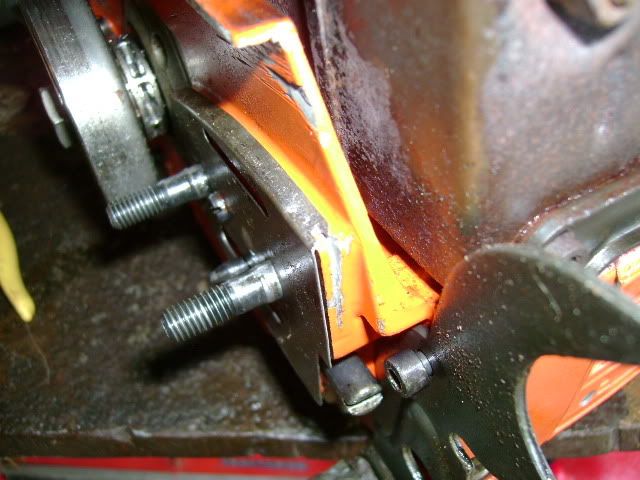Log Hogger
ArboristSite Operative
Another thing about outboards
Swapping chains/bars is much easier on an inboard saw. Slip the old one off, slap the new one on, no thinking required. Maybe a single wipe with a rag to clear wood chip gunk out of the clutch cover area.
On an outboard clutch, you have to follow a series of steps; slide the bar towards the clutch, take the chain off starting at the bar nose, remove the chain from the clutch and fit it between the clutch and the saw body, curse, angle the chain just right squeeze it between the clutch and the saw body, load the chain up with saw chip gunk as it slides between the clutch and saw body, curse, and your done. Don't bother cleaning out the wood chip gunk, a simple swipe of a rag won't do it, you need compressed air.
If the bar is pinched on an outboard clutch saw, repeat the above process without being able to start with the chain off on the bar side, and be prepared with lots of original swear word combinations.
The clutch cover is also more complicated on an outboard clutch saw since it must house the chain brake. A PITA to clean compared to an inboard clutch saw.
As mentioned previously, the biggest drawback of an outboard clutch is the labor involved in swapping sprockets, it's not really something that can be done in the field. That Partner saw with the locking flywheel and scrench-removable clutch sounds awesome, I wish other manufacturers would implement a similar design. For my Stihls, I have a supply of e-clips on hand and I just cover the e-clip area with a rag when removing it, haven't lost one so far.
For all it's shortcomings, an outboard clutch wouldn't be a deciding factor on a saw purchase for me. In fact my next saw will probably be a 346XP.
Swapping chains/bars is much easier on an inboard saw. Slip the old one off, slap the new one on, no thinking required. Maybe a single wipe with a rag to clear wood chip gunk out of the clutch cover area.
On an outboard clutch, you have to follow a series of steps; slide the bar towards the clutch, take the chain off starting at the bar nose, remove the chain from the clutch and fit it between the clutch and the saw body, curse, angle the chain just right squeeze it between the clutch and the saw body, load the chain up with saw chip gunk as it slides between the clutch and saw body, curse, and your done. Don't bother cleaning out the wood chip gunk, a simple swipe of a rag won't do it, you need compressed air.
If the bar is pinched on an outboard clutch saw, repeat the above process without being able to start with the chain off on the bar side, and be prepared with lots of original swear word combinations.
The clutch cover is also more complicated on an outboard clutch saw since it must house the chain brake. A PITA to clean compared to an inboard clutch saw.
As mentioned previously, the biggest drawback of an outboard clutch is the labor involved in swapping sprockets, it's not really something that can be done in the field. That Partner saw with the locking flywheel and scrench-removable clutch sounds awesome, I wish other manufacturers would implement a similar design. For my Stihls, I have a supply of e-clips on hand and I just cover the e-clip area with a rag when removing it, haven't lost one so far.
For all it's shortcomings, an outboard clutch wouldn't be a deciding factor on a saw purchase for me. In fact my next saw will probably be a 346XP.







